-
Report Prologue
-
Increasing Awareness Of Lancet And Pen Needles:
-
Production Of Lancet And Pen Needles: 15
-
FDA Regulation
-
For Lancet: 16
-
Market Introduction
-
Introduction 19
-
Scope Of Study 19
-
Research Objective 19
- Assumptions 20
-
Assumptions & Limitations 20
-
Limitations 20
-
Market Structure 21
-
Research Methodology
-
Research Process 22
-
Primary Research 23
-
Secondary Research 23
-
Market Size Estimation 23
-
Market
-
Dynamics
-
Introduction 25
-
Drivers 26
- Growing Incidence Number Of
- Increasing Inclination
- Improving Medical Device Regulation
-
Increasing Prevalence Of Diabetes 26
-
Contagious And Non-Contagious Diseases 27
-
Towards Home Healthcare 28
-
Restraints 30
- Risk Associated With Blood Transfusion
- Growing Adoption Of Oral Drug Delivery Systems, Reuse Of Pen
-
Needles And Infusion Sets 31
-
Opportunities 32
-
Mega
-
Trends: 32
-
Macroeconomic Indicators 33
-
Market Factor
-
Analysis
-
Porter’s Five Forces Model 34
- Bargaining
- Bargaining Power Of Buyers 35
- Threat Of Substitutes 35
-
Power Of Suppliers 35
-
Threat Of New Entrants 35
-
Intensity Of Rivalry 35
-
Value Chain Analysis 36
- Manufacturing 36
- Distribution &
- Post-Sales Monitoring 37
-
R&D 36
-
Sales 37
-
Demand & Supply:
-
Gap Analysis 37
-
Pricing Analysis 37
-
Investment Opportunity
-
Analysis 38
-
Lancet And Pen Needles Market, By Type
-
Lancet
- Regular Lancet 40
- Safety Lancet 40
-
Lancet 41
-
Pen Needles
- Standard Needles 42
- Safety Needles 43
-
Lancet And Pen Needles Market, By Application
-
Insulin 45
-
Capillary Blood Sampling 46
-
Hormones 47
-
Glucose
-
Like Peptide (GLP) 47
-
Skin Testing 48
-
Lancet And Pen
-
Needles Market, By End User
-
Hospitals & Clinics 50
-
Diagnostic Centers & Medical Institutions 51
-
Home Care &
-
Home Diagnostics 52
-
Research & Academic Laboratories 53
-
-
Global Lancet And Pen Needles Market, By Region
-
Introduction 54
-
Europe 56
-
Lancet And Pen Needles Market,
-
By Type
-
Lancet And Pen Needles Market, By Application
-
Lancet
-
And Pen Needles Market, By End User
-
Western Europe 59
-
Lancet And Pen Needles Market, By Type
-
Lancet And Pen Needles Market,
-
By Application
-
Lancet And Pen Needles Market, By End User
-
Germany 61
-
Lancet And Pen Needles Market, By Type
-
Lancet And
-
Pen Needles Market, By Application
-
Lancet And Pen Needles Market, By
-
End User
-
Lancet And Pen Needles Market,
-
By Type
-
France 64
-
Lancet And Pen Needles Market, By Application
-
Lancet
-
And Pen Needles Market, By End User
-
Lancet
-
U.K 66
-
And Pen Needles Market, By Type
-
Lancet And Pen Needles Market, By Application
-
Lancet And Pen Needles Market, By End User
-
Italy 69
-
Lancet And Pen Needles Market, By Type
-
Lancet And Pen Needles
-
Market, By Application
-
Lancet And Pen Needles Market, By End User
-
SPAIN 71
-
Lancet And Pen Needles Market, By Type
-
Lancet And Pen Needles Market, By Application
-
Lancet And Pen Needles
-
Market, By End User
-
Lancet
-
Rest Of Western Europe 74
-
And Pen Needles Market, By Type
-
Lancet And Pen Needles Market, By Application
-
Lancet And Pen Needles Market, By End User
-
Eastern Europe
-
Lancet And Pen Needles Market, By Type
-
Lancet And Pen Needles
-
Market, By Application
-
Lancet And Pen Needles Market, By End User
-
Americas 80
-
Lancet And Pen Needles Market, By Type
-
Lancet And Pen Needles Market, By Application
-
Lancet And Pen Needles
-
Market, By End User
-
Lancet And Pen
-
North America 83
-
Needles Market, By Type
-
Lancet And Pen Needles Market, By Application
-
Lancet And Pen Needles Market, By End User
-
U.S. 85
-
Lancet And Pen Needles Market, By Type
-
Lancet And Pen Needles
-
Market, By Application
-
Lancet And Pen Needles Market, By End User
-
Canada 88
-
Lancet And Pen Needles Market, By Type
-
Lancet And Pen Needles Market, By Application
-
Lancet And Pen Needles
-
Market, By End User
-
Lancet And Pen
-
South America 90
-
Needles Market, By Type
-
Lancet And Pen Needles Market, By Application
-
Lancet And Pen Needles Market, By End User
-
Asia Pacific 94
-
Lancet And Pen Needles Market, By Type
-
Lancet And Pen Needles
-
Market, By Application
-
Lancet And Pen Needles Market, By End User
-
Japan 97
-
Lancet And Pen Needles Market, By Type
-
Lancet And Pen Needles Market, By Application
-
Lancet And Pen Needles
-
Market, By End User
-
Lancet And Pen Needles
-
China 99
-
Market, By Type
-
Lancet And Pen Needles Market, By Application
-
Lancet And Pen Needles Market, By End User
-
India 102
-
Lancet And Pen Needles Market, By Type
-
Lancet And Pen Needles Market,
-
By Application
-
Lancet And Pen Needles Market, By End User
-
South Korea 104
-
Lancet And Pen Needles Market, By Type
-
Lancet
-
And Pen Needles Market, By Application
-
Lancet And Pen Needles Market,
-
By End User
-
Lancet And Pen Needles Market,
-
By Type
-
Australia 107
-
Lancet And Pen Needles Market, By Application
-
Lancet
-
And Pen Needles Market, By End User
-
Rest Of Asia Pacific 109
-
Lancet And Pen Needles Market, By Type
-
Lancet And Pen Needles
-
Market, By Application
-
Lancet And Pen Needles Market, By End User
-
The Middle East & Africa 113
-
Lancet And Pen Needles Market,
-
By Type
-
Lancet And Pen Needles Market, By Application
-
Lancet
-
And Pen Needles Market, By End User
-
Lancet And
-
UAE 116
-
Pen Needles Market, By Type
-
Lancet And Pen Needles Market, By Application
-
Lancet And Pen Needles Market, By End User
-
Saudi Arabia
-
Lancet And Pen Needles Market, By Type
-
Lancet And Pen
-
Needles Market, By Application
-
Lancet And Pen Needles Market, By End
-
User
-
Kuwait 121
-
Lancet And Pen Needles Market, By Type
-
Lancet And Pen Needles Market, By Application
-
Lancet And Pen
-
Needles Market, By End User
-
Lancet And Pen
-
Qatar 123
-
Needles Market, By Type
-
Lancet And Pen Needles Market, By Application
-
Lancet And Pen Needles Market, By End User
-
Africa 126
-
Lancet And Pen Needles Market, By Type
-
Lancet And Pen Needles
-
Market, By Application
-
Lancet And Pen Needles Market, By End User
-
Competitive Landscape
-
Introduction 129
-
Company Share Analysis 129
-
Company Profile
-
B. Braun
- Company Overview 131
- Financials
- Products 131
- Strategy 131
-
Melsungen AG 131
-
Key Developments 131
-
-
Terumo Corporation 132
- Company Overview 132
- Financials 132
- Strategy 132
- Key Developments 132
-
Products 132
-
Becton Dickinson 133
- Company Overview 133
- Financials 133
- Products 133
- Strategy
- Key Developments 133
-
Sanofi 134
- Financials 134
- Products
- Strategy 134
- Key Developments 134
-
Company Overview 134
-
F. Hoffmann-La Roche AG 135
- Company Overview 135
- Financials 135
- Products 135
- Strategy
- Key Developments 135
-
Bayer AG 136
- Company Overview 136
- Financials 136
- Strategy 136
- Key Developments 136
-
Products 136
-
Novo Nordisk A S 137
- Company Overview 137
- Financials 137
- Products 137
- Strategy
- Key Developments 137
-
Eli Lilly And Company
- Company Overview 138
- Financials 138
- Products 138
- Strategy 138
- Key Developments
-
-
Owen Mumford Ltd 139
- Company
- Financials 139
- Products 139
- Strategy 139
- Key Developments 139
- Company Overview 140
- Financials
- Products 140
- Strategy 140
-
Overview 139
-
Medtronic 140
-
Key Developments 140
-
Ypsomed Holding AG 141
- Financials 141
- Products
- Strategy 141
- Key Developments 141
-
Company Overview 141
-
Sarstedt AG & Co 142
- Company Overview 142
- Financials 142
- Products 142
- Strategy
- Key Developments 142
-
Greiner Bio One 143
- Company Overview 143
- Financials 143
- Products 143
- Strategy 143
- Key Developments
-
Abbott Laboratories 144
- Company Overview
- Financials 144
- Products 144
- Key Developments 144
-
Strategy 144
-
HTL-STREFA
- Company Overview 145
- Financials 145
- Products 145
- Strategy 145
-
S.A. 145
-
Key Developments 145
-
-
Improve Medical 146
- Company Overview 146
- Financials 146
- Strategy 146
- Key Developments
-
Products 146
-
MRFR Conclusion
-
Key Findings 147
- Unmet Needs Of The Market 147
-
From CEO’s View Point 147
-
Key Companies To Watch 148
-
Prediction Of Lancet And
-
Pen Needles Industry 148
-
Appendix
-
Discussion Blue
-
Print 149
-
List Of Tables
-
GLOBAL LANCET AND PEN
-
NEEDLES MARKET, BY TYPE, 2022-2030 (USD MILLION) 39
-
GLOBAL LANCET
-
AND PEN NEEDLES MARKET, BY LANCET, 2022-2030 (USD MILLION) 40
-
TABLE 3
-
GLOBAL LANCET AND PEN NEEDLES MARKET, BY PEN NEEDLES, 2022-2030 (USD MILLION) 42
-
GLOBAL LANCET AND PEN NEEDLES MARKET, BY APPLICATION, 2022-2030
-
(USD MILLION) 44
-
GLOBAL LANCET AND PEN NEEDLES MARKET, BY INSULIN,
-
GLOBAL LANCET AND PEN NEEDLES MARKET,
-
BY CAPILLARY BLOOD SAMPLING, 2022-2030 (USD MILLION) 46
-
GLOBAL
-
LANCET AND PEN NEEDLES MARKET, BY HORMONES, 2022-2030 (USD MILLION) 47
-
GLOBAL LANCET AND PEN NEEDLES MARKET, BY GLUCOSE LIKE PEPTIDE (GLP), 2022-2030
-
(USD MILLION) 47
-
GLOBAL LANCET AND PEN NEEDLES MARKET, BY SKIN
-
TESTING, 2022-2030 (USD MILLION) 48
-
GLOBAL LANCET AND PEN NEEDLES
-
MARKET, BY END USER, 2022-2030 (USD MILLION) 49
-
GLOBAL LANCET
-
AND PEN NEEDLES MARKET BY HOSPITALS & CLINICS, 2022-2030 (USD MILLION) 51
-
GLOBAL LANCET AND PEN NEEDLES MARKET BY DIAGNOSTIC CENTERS &
-
MEDICAL INSTITUTIONS,
-
TABLE 13
-
GLOBAL LANCET AND PEN NEEDLES MARKET BY HOME CARE & HOME DIAGNOSTICS, 2022-2030
-
(USD MILLION) 52
-
GLOBAL LANCET AND PEN NEEDLES MARKET
-
BY RESEARCH & ACADEMIC LABORATORIES,
-
EUROPE LANCET AND PEN NEEDLES MARKET, BY COUNTRY, 2022- 2030 (USD
-
MILLION) 56
-
EUROPE LANCET AND PEN NEEDLES MARKET, BY TYPE, 2022-2030
-
(USD MILLION) 56
-
EUROPE LANCETS MARKET, BY TYPE, 2022-2030 (USD
-
MILLION) 57
-
EUROPE SAFETY MARKET, BY TYPE, 2022-2030 (USD MILLION)
-
EUROPE PEN NEEDLES MARKET, BY TYPE, 2022-2030 (USD MILLION)
-
EUROPE APPLICATION MARKET, BY TYPE, 2022-2030 (USD MILLION)
-
EUROPE END USER MARKET, BY TYPE, 2022-2030 (USD MILLION)
-
WESTERN EUROPE LANCET AND PEN NEEDLES MARKET, BY TYPE, 2022-2030
-
(USD MILLION) 59
-
WESTERN EUROPE LANCETS MARKET, BY TYPE, 2022-2030
-
(USD MILLION) 59
-
WESTERN EUROPE SAFETY MARKET, BY TYPE, 2022-2030
-
(USD MILLION) 59
-
WESTERN EUROPE PEN NEEDLES MARKET, BY TYPE,
-
WESTERN EUROPE APPLICATION MARKET,
-
BY TYPE, 2022-2030 (USD MILLION) 60
-
WESTERN EUROPE END USER
-
MARKET, BY TYPE, 2022-2030 (USD MILLION) 61
-
GERMANY LANCET AND
-
PEN NEEDLES MARKET, BY TYPE, 2022-2030 (USD MILLION) 61
-
GERMANY
-
LANCETS MARKET, BY TYPE, 2022-2030 (USD MILLION) 62
-
GERMANY
-
SAFETY MARKET, BY TYPE, 2022-2030 (USD MILLION) 62
-
GERMANY PEN
-
NEEDLES MARKET, BY TYPE, 2022-2030 (USD MILLION) 62
-
GERMANY
-
APPLICATION MARKET, BY TYPE, 2022-2030 (USD MILLION) 63
-
GERMANY
-
END USER MARKET, BY TYPE, 2022-2030 (USD MILLION) 63
-
FRANCE
-
LANCET AND PEN NEEDLES MARKET, BY TYPE, 2022-2030 (USD MILLION) 64
-
TABLE
-
FRANCE LANCETS MARKET, BY TYPE, 2022-2030 (USD MILLION) 64
-
TABLE 36
-
FRANCE SAFETY MARKET, BY TYPE, 2022-2030 (USD MILLION) 64
-
FRANCE
-
PEN NEEDLES MARKET, BY TYPE, 2022-2030 (USD MILLION) 65
-
FRANCE
-
APPLICATION MARKET, BY TYPE, 2022-2030 (USD MILLION) 65
-
FRANCE
-
END USER MARKET, BY TYPE, 2022-2030 (USD MILLION) 66
-
U.K LANCET
-
AND PEN NEEDLES MARKET, BY TYPE, 2022-2030 (USD MILLION) 66
-
TABLE 41
-
U.K LANCETS MARKET, BY TYPE, 2022-2030 (USD MILLION) 67
-
U.K
-
SAFETY MARKET, BY TYPE, 2022-2030 (USD MILLION) 67
-
U.K PEN NEEDLES
-
MARKET, BY TYPE, 2022-2030 (USD MILLION) 67
-
U.K APPLICATION
-
MARKET, BY TYPE, 2022-2030 (USD MILLION) 68
-
U.K END USER MARKET,
-
BY TYPE, 2022-2030 (USD MILLION) 68
-
ITALY LANCET AND PEN NEEDLES
-
MARKET, BY TYPE, 2022-2030 (USD MILLION) 69
-
ITALY LANCETS MARKET,
-
BY TYPE, 2022-2030 (USD MILLION) 69
-
ITALY SAFETY MARKET, BY
-
TYPE, 2022-2030 (USD MILLION) 69
-
ITALY PEN NEEDLES MARKET, BY
-
TYPE, 2022-2030 (USD MILLION) 70
-
ITALY APPLICATION MARKET, BY
-
TYPE, 2022-2030 (USD MILLION) 70
-
ITALY END USER MARKET, BY TYPE,
-
SPAIN LANCET AND PEN NEEDLES MARKET,
-
BY TYPE, 2022-2030 (USD MILLION) 71
-
SPAIN LANCETS MARKET, BY
-
TYPE, 2022-2030 (USD MILLION) 72
-
SPAIN SAFETY MARKET, BY TYPE,
-
SPAIN PEN NEEDLES MARKET, BY TYPE,
-
SPAIN APPLICATION MARKET, BY TYPE,
-
SPAIN END USER MARKET, BY TYPE, 2022-2030
-
(USD MILLION) 73
-
REST OF WESTERN EUROPE LANCET AND PEN NEEDLES
-
MARKET, BY TYPE, 2022-2030 (USD MILLION) 74
-
REST OF WESTERN
-
EUROPE LANCETS MARKET, BY TYPE, 2022-2030 (USD MILLION) 74
-
REST
-
OF WESTERN EUROPE SAFETY MARKET, BY TYPE, 2022-2030 (USD MILLION) 74
-
TABLE
-
REST OF WESTERN EUROPE PEN NEEDLES MARKET, BY TYPE, 2022-2030 (USD MILLION) 75
-
REST OF WESTERN EUROPE APPLICATION MARKET, BY TYPE, 2022-2030 (USD
-
MILLION) 75
-
REST OF WESTERN EUROPE END USER MARKET, BY TYPE,
-
EASTERN EUROPE LANCET AND PEN NEEDLES
-
MARKET, BY TYPE, 2022-2030 (USD MILLION) 76
-
EASTERN EUROPE LANCETS
-
MARKET, BY TYPE, 2022-2030 (USD MILLION) 77
-
EASTERN EUROPE SAFETY
-
MARKET, BY TYPE, 2022-2030 (USD MILLION) 77
-
EASTERN EUROPE PEN
-
NEEDLES MARKET, BY TYPE, 2022-2030 (USD MILLION) 77
-
EASTERN
-
EUROPE APPLICATION MARKET, BY TYPE, 2022-2030 (USD MILLION) 78
-
TABLE
-
EASTERN EUROPE END USER MARKET, BY TYPE, 2022-2030 (USD MILLION) 78
-
AMERICAS LANCET AND PEN NEEDLES MARKET, BY REGION, 2022- 2030 (USD MILLION)
-
AMERICAS LANCET AND PEN NEEDLES MARKET, BY TYPE, 2022-2030
-
(USD MILLION) 80
-
AMERICAS LANCETS MARKET, BY TYPE, 2022-2030
-
(USD MILLION) 80
-
AMERICAS SAFETY MARKET, BY TYPE, 2022-2030
-
(USD MILLION) 81
-
AMERICAS PEN NEEDLES MARKET, BY TYPE, 2022-2030
-
(USD MILLION) 81
-
AMERICAS APPLICATION MARKET, BY TYPE, 2022-2030
-
(USD MILLION) 82
-
AMERICAS END USER MARKET, BY TYPE, 2022-2030
-
(USD MILLION) 82
-
NORTH AMERICA LANCET AND PEN NEEDLES MARKET,
-
BY TYPE, 2022-2030 (USD MILLION) 83
-
NORTH AMERICA LANCETS MARKET,
-
BY TYPE, 2022-2030 (USD MILLION) 83
-
NORTH AMERICA SAFETY MARKET,
-
BY TYPE, 2022-2030 (USD MILLION) 83
-
NORTH AMERICA PEN NEEDLES
-
MARKET, BY TYPE, 2022-2030 (USD MILLION) 84
-
NORTH AMERICA APPLICATION
-
MARKET, BY TYPE, 2022-2030 (USD MILLION) 84
-
NORTH AMERICA END
-
USER MARKET, BY TYPE, 2022-2030 (USD MILLION) 85
-
U.S. LANCET
-
AND PEN NEEDLES MARKET, BY TYPE, 2022-2030 (USD MILLION) 85
-
TABLE 84
-
U.S. LANCETS MARKET, BY TYPE, 2022-2030 (USD MILLION) 86
-
U.S.
-
SAFETY MARKET, BY TYPE, 2022-2030 (USD MILLION) 86
-
U.S. PEN
-
NEEDLES MARKET, BY TYPE, 2022-2030 (USD MILLION) 86
-
U.S. APPLICATION
-
MARKET, BY TYPE, 2022-2030 (USD MILLION) 87
-
U.S. END USER MARKET,
-
BY TYPE, 2022-2030 (USD MILLION) 87
-
CANADA LANCET AND PEN NEEDLES
-
MARKET, BY TYPE, 2022-2030 (USD MILLION) 88
-
CANADA LANCETS MARKET,
-
BY TYPE, 2022-2030 (USD MILLION) 88
-
CANADA SAFETY MARKET, BY
-
TYPE, 2022-2030 (USD MILLION) 88
-
CANADA PEN NEEDLES MARKET,
-
BY TYPE, 2022-2030 (USD MILLION) 89
-
CANADA APPLICATION MARKET,
-
BY TYPE, 2022-2030 (USD MILLION) 89
-
CANADA END USER MARKET,
-
BY TYPE, 2022-2030 (USD MILLION) 90
-
SOUTH AMERICA LANCET AND
-
PEN NEEDLES MARKET, BY TYPE, 2022-2030 (USD MILLION) 90
-
OUTH
-
AMERICA LANCETS MARKET, BY TYPE, 2022-2030 (USD MILLION) 91
-
TABLE 97
-
SOUTH AMERICA SAFETY MARKET, BY TYPE, 2022-2030 (USD MILLION) 91
-
TABLE
-
SOUTH AMERICA PEN NEEDLES MARKET, BY TYPE, 2022-2030 (USD MILLION) 91
-
SOUTH AMERICA APPLICATION MARKET, BY TYPE, 2022-2030 (USD MILLION) 92
-
SOUTH AMERICA END USER MARKET, BY TYPE, 2022-2030 (USD MILLION)
-
ASIA PACIFIC LANCET AND PEN NEEDLES MARKET, BY COUNTRY,
-
ASIA PACIFIC LANCET AND PEN NEEDLES
-
MARKET, BY TYPE, 2022-2030 (USD MILLION) 94
-
ASIA PACIFIC LANCETS
-
MARKET, BY TYPE, 2022-2030 (USD MILLION) 95
-
ASIA PACIFIC SAFETY
-
MARKET, BY TYPE, 2022-2030 (USD MILLION) 95
-
ASIA PACIFIC PEN
-
NEEDLES MARKET, BY TYPE, 2022-2030 (USD MILLION) 95
-
ASIA PACIFIC
-
APPLICATION MARKET, BY TYPE, 2022-2030 (USD MILLION) 96
-
ASIA
-
PACIFIC END USER MARKET, BY TYPE, 2022-2030 (USD MILLION) 96
-
TABLE 108
-
JAPAN LANCET AND PEN NEEDLES MARKET, BY TYPE, 2022-2030 (USD MILLION) 97
-
JAPAN LANCETS MARKET, BY TYPE, 2022-2030 (USD MILLION) 97
-
TABLE
-
JAPAN SAFETY MARKET, BY TYPE, 2022-2030 (USD MILLION) 97
-
TABLE 111
-
JAPAN PEN NEEDLES MARKET, BY TYPE, 2022-2030 (USD MILLION) 98
-
TABLE 112
-
JAPAN APPLICATION MARKET, BY TYPE, 2022-2030 (USD MILLION) 98
-
TABLE 113
-
JAPAN END USER MARKET, BY TYPE, 2022-2030 (USD MILLION) 99
-
TABLE 114
-
CHINA LANCET AND PEN NEEDLES MARKET, BY TYPE, 2022-2030 (USD MILLION) 99
-
CHINA LANCETS MARKET, BY TYPE, 2022-2030 (USD MILLION) 100
-
CHINA SAFETY MARKET, BY TYPE, 2022-2030 (USD MILLION) 100
-
TABLE
-
CHINA PEN NEEDLES MARKET, BY TYPE, 2022-2030 (USD MILLION) 100
-
TABLE
-
CHINA APPLICATION MARKET, BY TYPE, 2022-2030 (USD MILLION) 101
-
TABLE
-
CHINA END USER MARKET, BY TYPE, 2022-2030 (USD MILLION) 101
-
TABLE
-
INDIA LANCET AND PEN NEEDLES MARKET, BY TYPE, 2022-2030 (USD MILLION) 102
-
INDIA LANCETS MARKET, BY TYPE, 2022-2030 (USD MILLION) 102
-
INDIA SAFETY MARKET, BY TYPE, 2022-2030 (USD MILLION) 102
-
INDIA PEN NEEDLES MARKET, BY TYPE, 2022-2030 (USD MILLION) 103
-
INDIA APPLICATION MARKET, BY TYPE, 2022-2030 (USD MILLION) 103
-
INDIA END USER MARKET, BY TYPE, 2022-2030 (USD MILLION) 104
-
SOUTH KOREA LANCET AND PEN NEEDLES MARKET, BY TYPE, 2022-2030 (USD MILLION)
-
SOUTH KOREA LANCETS MARKET, BY TYPE, 2022-2030 (USD MILLION)
-
SOUTH KOREA SAFETY MARKET, BY TYPE, 2022-2030 (USD MILLION)
-
SOUTH KOREA PEN NEEDLES MARKET, BY TYPE, 2022-2030 (USD
-
MILLION) 105
-
SOUTH KOREA APPLICATION MARKET, BY TYPE, 2022-2030
-
(USD MILLION) 106
-
SOUTH KOREA END USER MARKET, BY TYPE, 2022-2030
-
(USD MILLION) 106
-
AUSTRALIA LANCET AND PEN NEEDLES MARKET,
-
BY TYPE, 2022-2030 (USD MILLION) 107
-
AUSTRALIA LANCETS MARKET,
-
BY TYPE, 2022-2030 (USD MILLION) 107
-
AUSTRALIA SAFETY MARKET,
-
BY TYPE, 2022-2030 (USD MILLION) 107
-
AUSTRALIA PEN NEEDLES
-
MARKET, BY TYPE, 2022-2030 (USD MILLION) 108
-
AUSTRALIA APPLICATION
-
MARKET, BY TYPE, 2022-2030 (USD MILLION) 108
-
AUSTRALIA END
-
USER MARKET, BY TYPE, 2022-2030 (USD MILLION) 109
-
REST OF ASIA
-
PACIFIC LANCET AND PEN NEEDLES MARKET, BY TYPE, 2022-2030 (USD MILLION) 109
-
REST OF ASIA PACIFIC LANCETS MARKET, BY TYPE, 2022-2030 (USD MILLION)
-
REST OF ASIA PACIFIC SAFETY MARKET, BY TYPE, 2022-2030
-
(USD MILLION) 110
-
REST OF ASIA PACIFIC PEN NEEDLES MARKET,
-
BY TYPE, 2022-2030 (USD MILLION) 110
-
REST OF ASIA PACIFIC APPLICATION
-
MARKET, BY TYPE, 2022-2030 (USD MILLION) 111
-
REST OF ASIA PACIFIC
-
END USER MARKET, BY TYPE, 2022-2030 (USD MILLION) 111
-
THE MIDDLE
-
EAST & AFRICA LANCET AND PEN NEEDLES MARKET, BY COUNTRY, 2022- 2030 (USD MILLION)
-
THE MIDDLE EAST & AFRICA LANCET AND PEN NEEDLES MARKET,
-
BY TYPE, 2022-2030 (USD MILLION) 113
-
THE MIDDLE EAST &
-
AFRICA LANCETS MARKET, BY TYPE, 2022-2030 (USD MILLION) 114
-
TABLE 147
-
THE MIDDLE EAST & AFRICA SAFETY MARKET, BY TYPE, 2022-2030 (USD MILLION) 114
-
THE MIDDLE EAST & AFRICA PEN NEEDLES MARKET, BY TYPE, 2022-2030
-
(USD MILLION) 114
-
THE MIDDLE EAST & AFRICA APPLICATION
-
MARKET, BY TYPE, 2022-2030 (USD MILLION) 115
-
THE MIDDLE EAST
-
& AFRICA END USER MARKET, BY TYPE, 2022-2030 (USD MILLION) 115
-
TABLE
-
UAE LANCET AND PEN NEEDLES MARKET, BY TYPE, 2022-2030 (USD MILLION) 116
-
UAE LANCETS MARKET, BY TYPE, 2022-2030 (USD MILLION) 116
-
TABLE
-
UAE SAFETY MARKET, BY TYPE, 2022-2030 (USD MILLION) 116
-
TABLE 154
-
UAE PEN NEEDLES MARKET, BY TYPE, 2022-2030 (USD MILLION) 117
-
TABLE 155
-
UAE APPLICATION MARKET, BY TYPE, 2022-2030 (USD MILLION) 117
-
TABLE 156
-
UAE END USER MARKET, BY TYPE, 2022-2030 (USD MILLION) 118
-
SAUDI
-
ARABIA LANCET AND PEN NEEDLES MARKET, BY TYPE, 2022-2030 (USD MILLION) 118
-
SAUDI ARABIA LANCETS MARKET, BY TYPE, 2022-2030 (USD MILLION) 119
-
SAUDI ARABIA SAFETY MARKET, BY TYPE, 2022-2030 (USD MILLION) 119
-
SAUDI ARABIA PEN NEEDLES MARKET, BY TYPE, 2022-2030 (USD MILLION)
-
SAUDI ARABIA APPLICATION MARKET, BY TYPE, 2022-2030 (USD
-
MILLION) 120
-
SAUDI ARABIA END USER MARKET, BY TYPE, 2022-2030
-
(USD MILLION) 120
-
KUWAIT LANCET AND PEN NEEDLES MARKET, BY
-
TYPE, 2022-2030 (USD MILLION) 121
-
KUWAIT LANCETS MARKET, BY
-
TYPE, 2022-2030 (USD MILLION) 121
-
KUWAIT SAFETY MARKET, BY
-
TYPE, 2022-2030 (USD MILLION) 121
-
KUWAIT PEN NEEDLES MARKET,
-
BY TYPE, 2022-2030 (USD MILLION) 122
-
KUWAIT APPLICATION MARKET,
-
BY TYPE, 2022-2030 (USD MILLION) 122
-
KUWAIT END USER MARKET,
-
BY TYPE, 2022-2030 (USD MILLION) 123
-
QATAR LANCET AND PEN NEEDLES
-
MARKET, BY TYPE, 2022-2030 (USD MILLION) 123
-
QATAR LANCETS
-
MARKET, BY TYPE, 2022-2030 (USD MILLION) 124
-
QATAR SAFETY MARKET,
-
BY TYPE, 2022-2030 (USD MILLION) 124
-
QATAR PEN NEEDLES MARKET,
-
BY TYPE, 2022-2030 (USD MILLION) 124
-
QATAR APPLICATION MARKET,
-
BY TYPE, 2022-2030 (USD MILLION) 125
-
QATAR END USER MARKET,
-
BY TYPE, 2022-2030 (USD MILLION) 125
-
AFRICA LANCET AND PEN
-
NEEDLES MARKET, BY TYPE, 2022-2030 (USD MILLION) 126
-
AFRICA
-
LANCETS MARKET, BY TYPE, 2022-2030 (USD MILLION) 126
-
AFRICA
-
SAFETY MARKET, BY TYPE, 2022-2030 (USD MILLION) 126
-
AFRICA
-
PEN NEEDLES MARKET, BY TYPE, 2022-2030 (USD MILLION) 127
-
AFRICA
-
APPLICATION MARKET, BY TYPE, 2022-2030 (USD MILLION) 127
-
AFRICA
-
END USER MARKET, BY TYPE, 2022-2030 (USD MILLION) 128
-
List Of Figures
-
GLOBAL LANCET AND PEN NEEDLES MARKET, BY TYPE, 2022 (%) 16
-
GLOBAL LANCET AND PEN NEEDLES MARKET, BY APPLICATION, 2022 (%) 17
-
GLOBAL LANCET AND PEN NEEDLES MARKET, BY END USER, 2022 (%) 17
-
GLOBAL LANCETS AND PEN NEEDLES MARKET, BY REGION, 2022 (%) 18
-
GLOBAL LANCET AND PEN NEEDLES MARKET: MARKET STRUCTURE 21
-
RESEARCH PROCESS 22
-
PORTERS FIVE FORCES MODEL: GLOBAL
-
LANCET AND PEN NEEDLES MARKET 34
-
GLOBAL LANCET AND PEN NEEDLES
-
MARKET, BY END USER, 2022 & 2030 (USD MILLION) 39
-
GLOBAL
-
LANCET AND PEN NEEDLES MARKET, BY APPLICATION, 2022 & 2030 (USD MILLION) 45
-
GLOBAL LANCET AND PEN NEEDLES MARKET, BY END USER, 2022 &
-
GLOBAL LANCET AND PEN NEEDLES MARKET:
-
COMPANY SHARE ANALYSIS, 2022 (%) 130

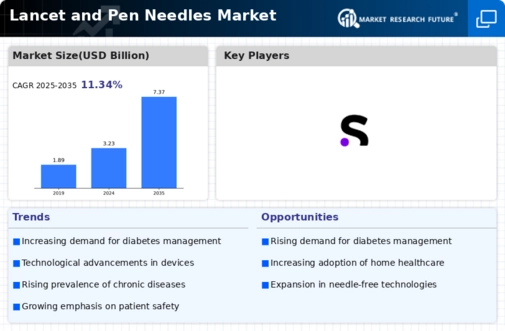
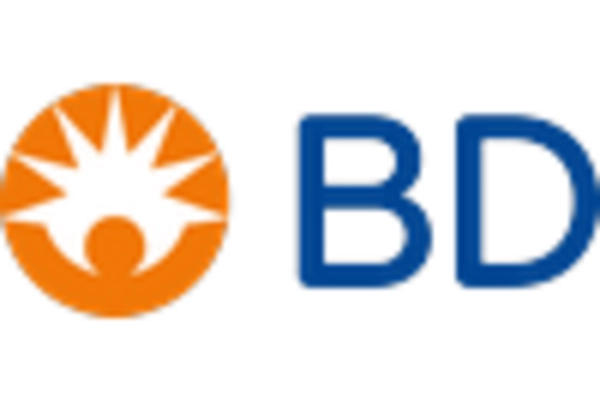

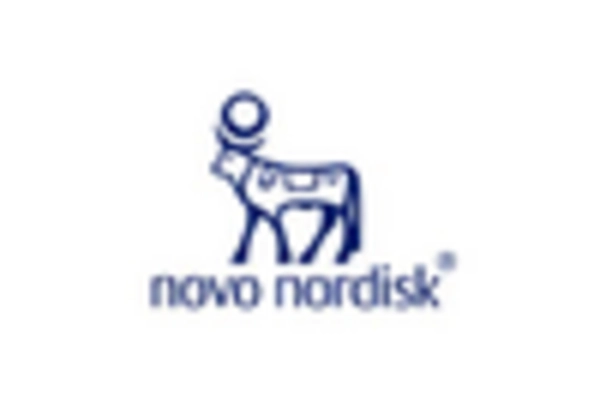
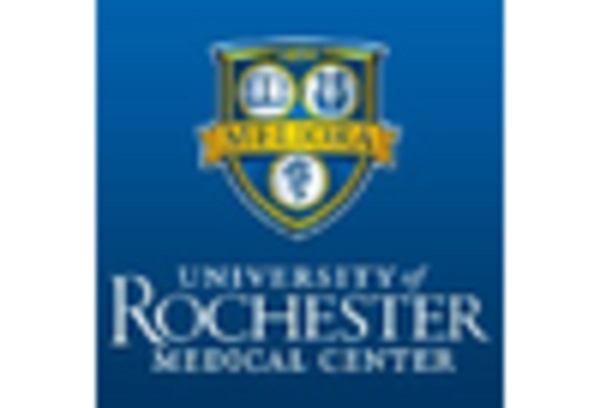
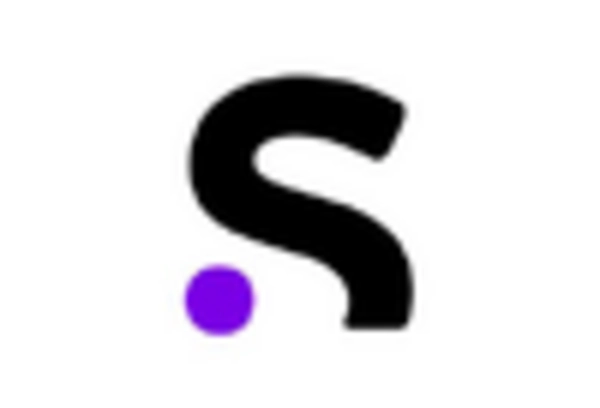
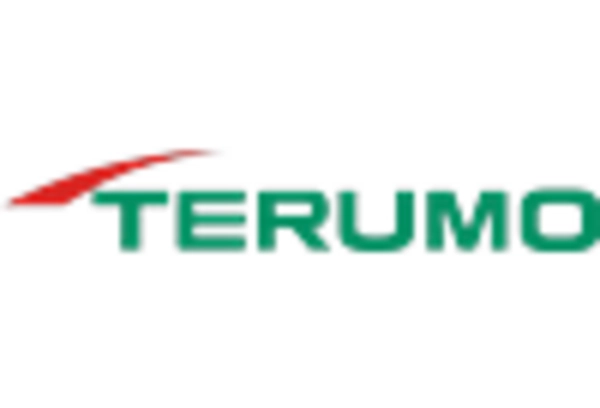









Leave a Comment